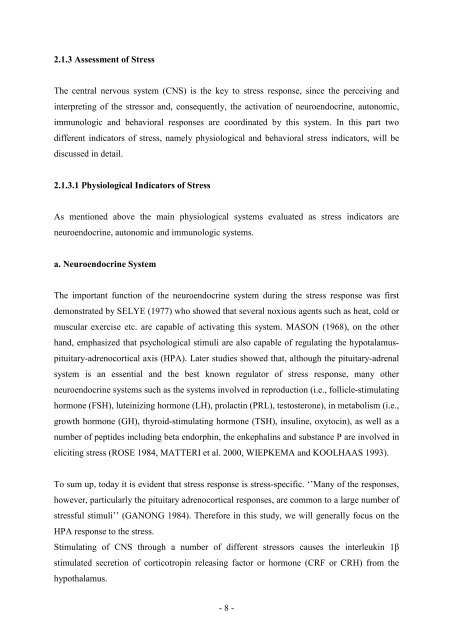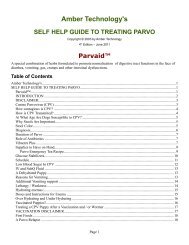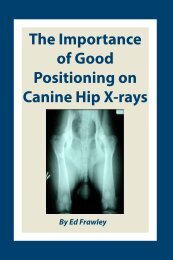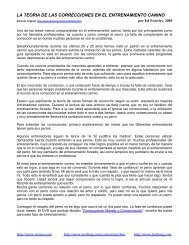Comparison of Stress and Learning Effects of Three Different ...
Comparison of Stress and Learning Effects of Three Different ...
Comparison of Stress and Learning Effects of Three Different ...
Create successful ePaper yourself
Turn your PDF publications into a flip-book with our unique Google optimized e-Paper software.
2.1.3 Assessment <strong>of</strong> <strong>Stress</strong><br />
The central nervous system (CNS) is the key to stress response, since the perceiving <strong>and</strong><br />
interpreting <strong>of</strong> the stressor <strong>and</strong>, consequently, the activation <strong>of</strong> neuroendocrine, autonomic,<br />
immunologic <strong>and</strong> behavioral responses are coordinated by this system. In this part two<br />
different indicators <strong>of</strong> stress, namely physiological <strong>and</strong> behavioral stress indicators, will be<br />
discussed in detail.<br />
2.1.3.1 Physiological Indicators <strong>of</strong> <strong>Stress</strong><br />
As mentioned above the main physiological systems evaluated as stress indicators are<br />
neuroendocrine, autonomic <strong>and</strong> immunologic systems.<br />
a. Neuroendocrine System<br />
The important function <strong>of</strong> the neuroendocrine system during the stress response was first<br />
demonstrated by SELYE (1977) who showed that several noxious agents such as heat, cold or<br />
muscular exercise etc. are capable <strong>of</strong> activating this system. MASON (1968), on the other<br />
h<strong>and</strong>, emphasized that psychological stimuli are also capable <strong>of</strong> regulating the hypotalamus-<br />
pituitary-adrenocortical axis (HPA). Later studies showed that, although the pituitary-adrenal<br />
system is an essential <strong>and</strong> the best known regulator <strong>of</strong> stress response, many other<br />
neuroendocrine systems such as the systems involved in reproduction (i.e., follicle-stimulating<br />
hormone (FSH), luteinizing hormone (LH), prolactin (PRL), testosterone), in metabolism (i.e.,<br />
growth hormone (GH), thyroid-stimulating hormone (TSH), insuline, oxytocin), as well as a<br />
number <strong>of</strong> peptides including beta endorphin, the enkephalins <strong>and</strong> substance P are involved in<br />
eliciting stress (ROSE 1984, MATTERI et al. 2000, WIEPKEMA <strong>and</strong> KOOLHAAS 1993).<br />
To sum up, today it is evident that stress response is stress-specific. ‘’Many <strong>of</strong> the responses,<br />
however, particularly the pituitary adrenocortical responses, are common to a large number <strong>of</strong><br />
stressful stimuli’’ (GANONG 1984). Therefore in this study, we will generally focus on the<br />
HPA response to the stress.<br />
Stimulating <strong>of</strong> CNS through a number <strong>of</strong> different stressors causes the interleukin 1β<br />
stimulated secretion <strong>of</strong> corticotropin releasing factor or hormone (CRF or CRH) from the<br />
hypothalamus.<br />
- 8 -














